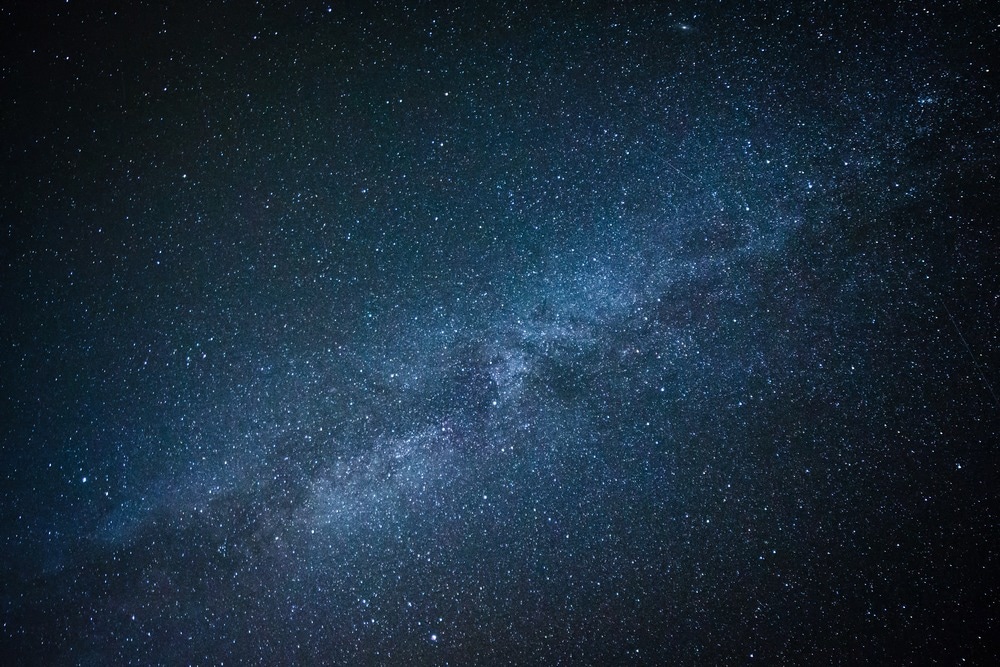The universe has many enigmatic secrets still to be revealed to scientists. Now, researchers may have solved one of the cosmos’ most profound mysteries: why planetary nebulae align near the center of the Milky Way Galaxy.

Image Credit: Teemu Tretjakov/Shutterstock.com
Planetary Nebulae
Planetary nebulae form when a star of intermediate mass goes supernova at the end of its life. They are clouds of ionized gas that form stunningly beautiful expanding shells. The term itself is largely a misnomer, as they are not connected to planets.
The term “planetary nebula” refers to the round, planet-like shape observed by early astronomers. They are relatively short-lived, lasting around a few millennia. The Sun is expected to form a planetary nebula when it reaches the end of its life cycle.
Essentially, planetary nebula are the “ghosts” of the original stars, forming ethereal and exquisite shapes such as hourglasses or the wings of butterflies. The Helix Nebula, one of the most famous, has even been named the “Eye of God,” a testament to the profound nature of these mysterious cosmic structures.
When Stars Align
Ten years ago, an enigmatic mystery appeared in the astronomy community: near the Galactic Center of the Milky Way, planetary nebulae appeared to align. The source of this surprising phenomenon has been the focus of research in the intervening decade.
The alignment occurs even in unrelated planetary nebulae located in different places in the galaxy and of different ages. The nebulae all line up parallel with the Galactic plane near the center of the Milky Way.
Now, the reason for this alignment has been revealed by data obtained from the Hubble Space Telescope and the VLT. It appears that stellar companions, namely close binary stars, are responsible.
Non-binary star systems do not display this alignment, meaning that the companion stars must be responsible. There may be a link to the binary component’s separation during the system’s birth.
The close binary star responsible orbits extremely closely to the original star in the nebula, closer than Mercury’s orbit of our Sun. Quite why this mechanism causes different, seemingly unrelated nebulae to align with the Galactic plane is not yet properly understood.
The Study
Writing in Astrophysical Journal Letters, researchers from The University of Manchester and the University of Hong Kong studied 136 planetary nebulae located in a region of the Milky Way Galaxy known as the galactic bulge.
The region contains dust, stars, stellar remnants, and gas. It is the thickest region of the Milky Way. The authors used the VLT in Chile to investigate the target nebulae. This telescope’s main mirror is eight meters in diameter.
Using the Hubble Space Telescope, the researchers further examined and re-measured 40 nebulae. The authors of the paper observed that bipolar nebulae can be formed by more than one type of system.
The authors noted that, as previously mentioned, the binary companion star seems to have an influence on the nebulae’s alignment in this region of space. However, previously unknown external forces may play a part as well.
One explanation may be found in another enigmatic but vastly better-understood phenomenon: magnetism. At the time of their formation, binary star systems may have been subject to extremely strong extant Galactic magnetic fields. Thus, their orbits would have aligned with these extant fields.
Binary systems display higher angular momenta compared to single-star systems, meaning that they align with external magnetic fields more, according to the paper. Indeed, current studies indicate that magnetic fields play a key role in the formation of binary systems, having a lot of influence on molecular cloud core fragments.
Current studies have also reported that this effect is more pronounced in binary systems where the two stars are very close together. When one of the stars within forms a planetary nebula, the nebula’s symmetry axes correspond with the axes of angular momenta.
Solving an Enigmatic Cosmic Mystery
The observations published in this paper and from the past decade of research into planetary nebulae at the galactic bulge reveal the potential mechanisms behind an enigmatic and, as yet, poorly understood cosmic mystery.
Whilst more research will be required, scientists are closer to understanding why planetary nebulae formed from binary star systems align with the galactic plane in the region of space known as the Galactic Bulge.
Further Reading and More Information
Tan, S et al. (2023) When the Stars Align: A 5σ Concordance of Planetary Nebulae Major Axes in the Center of Our Galaxy ApJL 951 L44 [online] iopscience.iop.org. Available at:
https://iopscience.iop.org/article/10.3847/2041-8213/acdbcd
Disclaimer: The views expressed here are those of the author expressed in their private capacity and do not necessarily represent the views of AZoM.com Limited T/A AZoNetwork the owner and operator of this website. This disclaimer forms part of the Terms and conditions of use of this website.